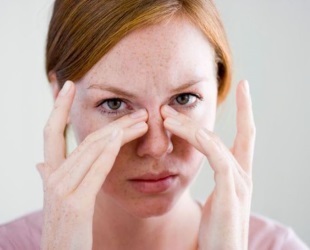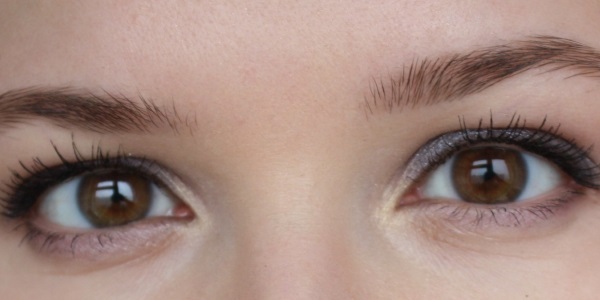
Many people with visual impairments do not want to wear glasses. Heavy, uncomfortable. Neither swim in them nor run.
And then, the thicker the glasses, the less aesthetically pleasing the face.
Contact lenses come to the rescue. They are worn for myopia, hyperopia, astigmatism. They strengthen or change the color of the eyes.
One of the frequent questions of those people who have just started using this accessory, is it possible to cry in lenses? Let's look at all the nuances.
- 1. What is the tear of
- 2. In what cases is it safe to cry in lenses?
- 3. When you can not do it
- 4. When tears harm the lenses
- 5. Conclusion
- 6. Interesting video
What is tears
Tear glands produce a clear liquid with a slightly alkaline reaction.
In addition to water, it contains mucus, common salt and a small amount of potassium sulfate, sodium carbonate, albumin, magnesium.
Tears in the chemical composition are similar to blood, but they have more potassium and chlorine. They not only wash, but nourish the eyes. At long crying on eyes, even without lenses, thin film is formed.
It is interesting that tears can be taken for analysis, like blood. Their composition varies with the state of the body. Now they are testing lenses that can measure the amount of sugar in diabetics and transmit the result.
And find out how much of it, this sugar, will be not by blood, but by tears. Only now it is necessary to cry more often. And, the exact result is given by natural, emotionally "colored" tears. It does not matter, if only for the good.
By the way, if after prolonged crying, the lenses are cloudy, you need to turn to the ophthalmologist. The fact is that the lacrimal fluid, changing during illness, is saturated with bacteria. And those, in turn, settle on lenses, feed on them, causing turbidity.
Having identified the disease at the very beginning, it can be much faster to cure it.
When to cry in lenses safely?
Tears will not damage the lens if:
- they slightly drip, rather than pouring waterfall;
- the lenses with the necessary number of diopters are chosen;
- you do not rub your eyes.
Many doctors believe that a small amount of tears moisturizes the eyes when they are dry and makes wearing a lens more comfortable. There is even such advice - with dry eyes from the heart, to tears, peek and blink.
Normally, a tear film enters the cornea from the lacrimal gland. When blinking, it spreads over the surface of the cornea.80% of the visual acuity depends on this film.
A lens, especially the more comfortable, soft cover the cornea and the tissue around it, which causes a violation of the circulation of tear fluid. This can cause dry eye syndrome.
In this case, doctors recommend the use of drops to moisturize the eyes. The syndrome itself is a reaction to working at a computer, wearing lenses, smog and air conditioners.
The number of lacrimation sufferers increases year by year and has already reached 67% among ophthalmic patients over 50 years old.
So, a small amount of tears is only good for the eyes.

When this can not be done
Conjunctivitis
With conjunctivitis, eyes turn red and watery. Infectious conjunctivitis is caused by viruses and bacteria.
Usually it affects first one eye, but if you do not follow the rules of hygiene, the second one becomes infected. Allergic - affects both eyes at once.
At the very beginning of the disease, it seems that the lenses are quite comfortable, but soon the eyes begin to itch and tear.
In addition, lenses are infected with bacteria and viruses. Sometimes conjunctivitis is caused by the lenses themselves.
This occurs if they were worn for longer than the due date or simply mismanaged them. To wear lenses during illness is to expose your eyes to the danger of corneal opacity.
In addition, the foreign body will make it difficult to treat the eyes, adhere to the rules of hygiene. Do not wear lenses with conjunctivitis. And after recovery, buy new ones so as not to repeat the infection. Use glasses for treatment.
Fog
If the lenses become clouded, they must be removed and cleaned with the composition prescribed for this brand. This indicator can testify to the presence of harmful bacteria on contact lenses.
Incorrect lenses
Incorrectly selected lenses "float" in the eyes. Soft models swell from tears and can stop sticking to the eyes.
If the lenses are more prominent than necessary, the eyes overstress, blush, and it will be difficult for the tear to pass through the lens that is close to the cornea. This can lead to inflammation of the eyes.
If the radius of curvature exceeds desired, the lenses move easily. They can, especially with tearing, fall out, scratch the cornea.
Blinking will become painful with flat lenses. Help can only the ophthalmologist, picking up the right pair.
Itching in the eyes of
If you rub eyes, the lens may shift, and even scratch the cornea. It's painful, unpleasant and dangerous. Users say that sometimes lenses fold four times.
A strong stream of tears
Having bellowed "beluga", you will feel the sand under the eyelids, you will see the world in a fog. After you cried well in the lenses, they must be removed, and the eyes dripped with the doctor's prescribed drops of swelling and inflammation.
Some users instill drops with hyaluronic acid for lens comfort. The face should be rinsed with cold water, and put ice on the eyelids for half a minute. The lenses themselves need to be washed with a solution prescribed by a doctor and then dressed again.
An interesting fact: most users note - in lenses do not cry when cleaning the onions.
When tears harm
lenses The tears of lenses themselves are not harmful to conventional or colored lenses. But, again, there are nuances.
You can wash the lens off the eyes
A large number of tears can wash off the lens, but it does not damage them. The composition of tears does not depend on their number. But it's easy to lose lenses washed away with tears. Therefore, it is better to remove and remove the lens before we cry.
Lift the fallen lens with a piece of paper, bringing it from below, put it in a container and fill it with a suitable solution. Rinse the lens thoroughly, wait until it has reached the desired shape and insert it into the eye.
Blurred cosmetics

Cosmetics, hitting the eyes, pollute the lens. It is necessary to take out and clean them. In general, lenses do not tolerate cosmetics around the eyes.
Mascara can get on the lenses and under them not only when you cry. Dry mascara falls, pollutes the lens and scratches the cornea.
The lenses can get cosmetics, applied around the eyes, hair spray and even droplets of deodorant.
In the hairdresser in lenses it is better not to go - droplets of hairspray, small pieces of hair can get into the eye and under the lens.
Tears will also be there, along with lens contamination and red eyes.
Be sure to close your eyes tightly if any spray is sprayed nearby and open them only by moving away from the spray cloud.
Oily creams for face and hands can get on the lenses and spoil them. Odorants and preservatives in cosmetics also cause eye reactions and impair the quality of the lens.
To facilitate the situation, a safe ophthalmic cosmetic is developed. She has a hypoallergenic composition. And the structure of the carcass is so finely dispersed that, even crumbling, mascara does not injure the cornea.
Among ophthalmic cosmetic products, there are all the necessary products for the skin, including the skin around the eyes. The line of products does not use parabens, fragrances, fats, preservatives, which could cause allergy or close the permeability of contact lenses for oxygen.
All such cosmetics correspond to PH human tears. So, you can cry with her.
Tips for
| 1 | First, put on the lenses, then apply makeup. And vice versa, first remove the lens, then make-up |
| 2 | Do not comb the eyelashes after applying the mascara |
| 3 | If you have long-term wear lenses, take off the make-up with napkins with hydrophilic oil |
| 4 | To prevent bacteria from multiplying in carcasses, change it every three months. |
| 5 | Apply soft clothpencil and only on the outside of the century. Cosmetics inside the eyelids block the work of meibomian glands, which help to release tear film. Fat shadows, getting on the lenses, worsen visibility, interfere with the "breathing" of the |
| 6 | lenses. Apply the shadows with a foam applicator. With brushes makeup crumbles, gets into the eyes, causes lacrimation |
Conclusion
- Rinse meager tear in the lenses even useful. It is not forbidden and slightly cry when watching a melodrama. Laughing to tears is also good.
- Harmfully long to cry and rub eyes.
- Use caustic mascara with caution. Crumbling or blurred from tears, mascara can damage the eyes and lenses. Correctly choose those cosmetics, observe the rules of hygiene. This is especially true for mascara. The water-based mascara spreads, creeps, problematically crying with such mascara on the eyes.
- It is necessary to use special cosmetics, approved by ophthalmologists.
- Never wear a lens if the eyes are watering with conjunctivitis.
- Wear properly selected lenses, otherwise they may shift with lacrimation and friction.
Interesting video
This video might be interesting for you:
